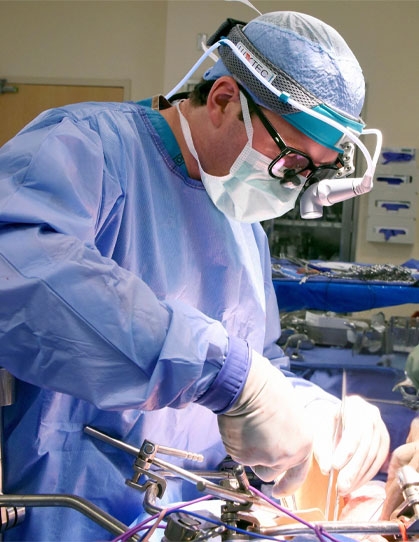Pancreatic Cancer – The Silent Killer

By: Dr. John Richey, McLeod General Surgeon, Pee Dee Surgical Group
Risk Factors, Symptoms, Treatment Options
The pancreas plays a critical role in producing insulin and enzymes to help digest food. It is located deep in the abdomen, surrounded by the liver, intestines, spleen, and stomach, making tumor detection more difficult. Pancreatic cancer is often called the “Silent Killer” due to its aggressive nature and difficulty in early detection. Most cases are diagnosed in patients over the age of 60.
Risk factors for pancreatic cancer include smoking, obesity, chronic pancreatitis, a family history of the disease, diabetes, and cirrhosis of the liver. Symptoms can include abdominal or back pain, unexplained weight loss, nausea, fatigue, jaundice (yellowing of the skin and eyes), and loss of appetite. Since the early symptoms are vague, pancreatic cancer is often diagnosed at later stages, when it may have already spread to other organs.
For patients diagnosed with early-stage pancreatic cancer, the Whipple procedure is often considered the best treatment option. This surgery is used to treat pancreatic cancer as well as other disorders affecting the pancreas or bile duct. The goal is to remove the tumor and prevent it from spreading to other organs.
The Whipple procedure, or pancreaticoduodenectomy, is a complex surgery used to treat tumors located in the head of the pancreas, bile duct, or duodenum (the first part of the intestine), as well as complications from chronic pancreatitis. During the procedure, the surgeon removes the head of the pancreas, the top portion of the small intestine, the gallbladder, the bile duct, and nearby lymph nodes. The remaining pancreas, bile duct, and stomach are then reconnected to the intestine to allow food to pass through and be digested.
While traditionally performed as an open surgery with a large abdominal incision, the Whipple procedure can also be done using laparoscopic or robotic-assisted methods. These minimally invasive techniques involve smaller incisions, allowing for faster recovery and less blood loss compared to the traditional open surgery.
At McLeod, we often perform the Whipple procedure using robotic-assisted laparoscopic surgery, which offers significant benefits to patients, such as a quicker recovery time and less post-operative discomfort. However, the decision about which surgical approach is best for each patient depends on their specific condition and the tumor’s location.
After surgery, patients typically spend about a week in the hospital. Most can resume normal activities within four to six weeks, although recovery time can vary.
By offering advanced treatments like the Whipple procedure, McLeod ensures that patients receive the highest level of care tailored to their specific needs. Whether through traditional, laparoscopic, or robotic-assisted procedures, our goal is to provide the most effective surgical options with a focus on faster recovery, reduced discomfort, and improved outcomes. With the expertise of our team and the latest advancements in pancreatic cancer treatment, we are committed to helping patients regain their health and quality of life.
 Dr. John Richey is a Board-Certified General Surgeon with Pee Dee Surgical Group. Dr. Richey’s expertise includes advanced training in complex biliary and pancreatic surgery. He is specially trained in ERCP (Endoscopic Retrograde Cholangiopancreatography) and Biliary and Pancreatic Surgery. For more information, call 843-665-7941.
Dr. John Richey is a Board-Certified General Surgeon with Pee Dee Surgical Group. Dr. Richey’s expertise includes advanced training in complex biliary and pancreatic surgery. He is specially trained in ERCP (Endoscopic Retrograde Cholangiopancreatography) and Biliary and Pancreatic Surgery. For more information, call 843-665-7941.
-
McLEOD REGIONAL MEDICAL CENTER FLORENCE
843-777-2000 -
McLEOD DARLINGTON
843-777-1100 -
McLEOD DILLON
843-774-4111 -
McLEOD LORIS
843-716-7000 -
McLEOD SEACOAST
843-390-8100 -
McLEOD CHERAW
843-537-7881 -
McLEOD CLARENDON
803-433-3000



-
McLEOD REGIONAL MEDICAL CENTER FLORENCE
843-777-2000 -
McLEOD DARLINGTON
843-777-1100 -
McLEOD DILLON
843-774-4111 -
McLEOD LORIS
843-716-7000 -
McLEOD SEACOAST
843-390-8100 -
McLEOD CHERAW
843-537-7881 -
McLEOD CLARENDON
803-433-3000
 Find a Doctor
Find a Doctor  Locations
Locations  Services
Services